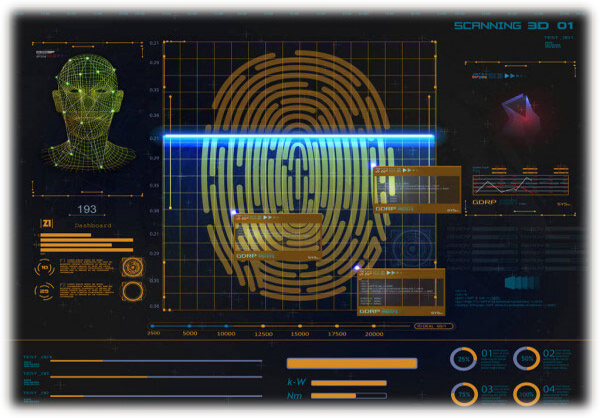Cyber Threat Hunting Solutions At Scale
Discover threat hunting solutions for tracking and mitigating global network cyber threats
What Is Threat Hunting?
Cyber threat hunting in the cyber community is the process of searching for potential cyber threats or malicious activity within a network, before they cause damage. Instead of waiting for automated systems to detect anomalies, threat hunting solutions can actively investigate suspicious behavior and hidden vulnerabilities that may evade traditional security tools.
Cyber threat hunting is a combination of advanced analytics, human intuition, and real-time monitoring to identify and mitigate potential threats before they can infiltrate or harm the network.
As more organizations transition to remote work and data traffic increases across your network, the risk of cyberattacks rises significantly.
Without robust threat hunting solutions in place, your network becomes vulnerable, potentially leading to costly security breaches for your organization.
- Heightened risk of financial losses
- Harm to your brand’s reputation
- Exposure of personal identity or financial information
- Loss of essential data
- Breach of sensitive business intelligence


Cyber Threats Go Undetected
As mentioned earlier, attackers often try to remain undetected for weeks or even months, biding their time as they extract data and gather confidential information or credentials.
This slow infiltration sets the stage for a massive data breach. How much damage can they cause? The answer depends on how much access they gain during their undetected period, which could lead to significant financial, reputational, and operational harm.
The modern cybersecurity landscape is facing an ever-growing array of threats. Complex botnet campaigns, which use compromised devices to launch attacks like DDoS and phishing, are increasing in frequency.
Similarly, encrypted traffic poses a challenge, as cybercriminals hide their malicious activities within encrypted data streams, making it difficult for security systems to detect these threats.
Types of Cyber Threats

Distributed Denial of Service
Overwhelms a server with traffic, rendering it inaccessible to legitimate users.

Botnet Campaigns
A network of compromised devices controlled by a central source to perform large-scale, coordinated attacks without detection.

Malware
Malicious software like viruses, ransomware, or worms designed to disrupt systems, steal data, or cause service disruptions.
The NetQuest Cyber Threat Hunting Structure
Visibility
Intelligence
Response
Security
Detection
Network visibility allows your cyber threat hunting team to monitor, track, analyze, and report on all networks, systems, and applications related to the security of your network.
Context-rich metadata delivers an extensive dataset, empowering your security tools with high-fidelity network traffic intelligence.
This enables faster detection of emerging botnets and C2 communication ,identifies risky behaviors, reveals slow-moving attack patterns, pinpoints indicators of compromise, and supports detailed investigations.
Cyber Threat Hunting With Metadata
Finding threats in encrypted traffic has long been a difficult task, between protocol specific handshakes and encrypted payloads, it is a challenge that is here to stay and needs to be addressed.
Cyber threat intelligence is data collected and collated by tools used to detect potentially malicious behavior.
In the UK, the term Internet Connection Records (ICRs) is used more commonly when referring to detailed metadata.
Hackers are using increasingly complex techniques to hide within communication flows, embedding in networks’ attack surfaces for prolonged periods.
Internet Connection Records (ICRs) play a crucial role in tracking cyber threats across large-scale networks by providing metadata that helps security teams identify suspicious patterns without analyzing communication content.
Optimized Cyber Threat Hunting Through Filtering
With reliable packet-level data, you can rapidly and accurately reconstruct sessions and transactions, enabling faster and more precise incident response.
However, over half of network packets offer little value to threat hunting efforts. Filtering out irrelevant traffic and delivering only actionable data to detection tools is essential for developing an efficient and scalable cyber threat hunting solution.
Examples of optimized traffic sifting and filtering are:
- Layer 7 Application metadata such as social media sites, instant messaging, or VPNs
- IP Prefix
- Dropping streaming video traffic to clear up memory and avoid affecting performance.
Threat Hunting Solutions Lead To Quicker Response
Intelligence coupled with your organization’s network, application and end-user data allows your SecOps team to assess and weigh risk factors in real time to allow you to make informed decisions as quickly as possible.
Leveraging network intelligence leads to quicker responses during cyber attacks by equipping SecOps teams with real-time, actionable insights that streamline the detection, investigation, and response process.
Your threat hunting framework should include a breach response protocol that includes isolating and eliminating the threat, recovering lost data, and notifying customers and shareholders of the breach when applicable.
Cyber Threat Hunting at International Scale
A properly implemented cyber threat hunting solution can help your organization:
- Stay informed of the latest and most advanced cyber security threats
- Maintain an active threat posture
- Be proactive instead of reactive
- Enhance visibility into potential attacks
- Help you track and and secure your most valuable assets
- Identify successful attacks more quickly to mitigate damages
Modern WAN transport networks enable global interconnectivity and seamless communication across borders, using optical fiber to share data instantly between devices anywhere in the world.
When it comes to nation-state threat hunting, defense and telecom missions require highly specialized visibility solutions. At this scale, hunting for threats involves analyzing IP packets traveling through submarine networks and navigating complex protocol stacks, including DWDM, OTN, and SONET/SDH.
Conventional WAN monitoring tools, often built for standard telecom operations, fall short in these environments, as they aren’t designed for the level of deep analysis required to detect sophisticated threats on a global scale.

Industries We Serve
Government
Governing bodies are responsible for a large amount of classified information and need to stay up-to-date on cyber security threats. They need to be absolutely sure that their networks are as secure as possible, and NetQuest offers a variety of solutions for government needs.
Telecom
The telecommunications industry tends to have expansive networks that span across large areas, making them more vulnerable to malicious attacks. Telecom organizations investing in complete network visibility can rest assured that their customer's traffic is protected and security threats are quickly mitigated.
Enterprise
Enterprise and e-commerce businesses also need robust network visibility solutions to ensure sensitive information is protected against corporate theft. NetQuest offers a number of cost-effective cyber security solutions that enterprise SecOps teams can utilize to increase security of their networks.
Get the Cyber Threat Hunting Solution
You Need with NetQuest
At NetQuest, we’ve provided innovative, industry-leading cyber threat hunting solutions to global organizations large and small since 1987.
Our mission is to optimize visibility of critical network data to prevent threats and detect anomalous behavior.




